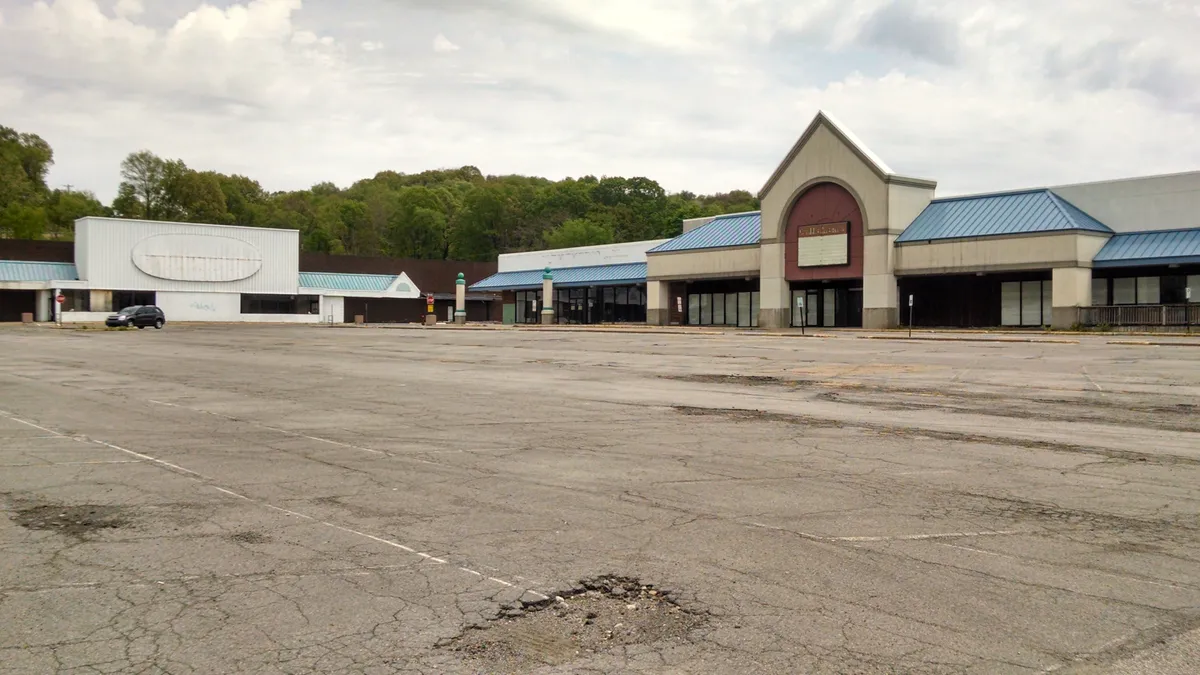Dive Brief:
- Ratings agency Moody's Investor Service expects retail defaults among the borrowers it covers to peak this March at a rate of 12.43%. Over the next 12 months, Moody's predicts that at least six retail and apparel companies it covers will default, mostly in the first half of the year.
- Analysts led by Charles O'Shea noted in a report emailed Wednesday that the ranks of its distressed-level retailers have fallen recently from 26 to 20, about where the list was a year ago. Accounting for the difference are four retailers that received upgrades from Moody's, and another two that went bankrupt this year. The analysts added that "pain will persist among weak issuers" as retailers run into mounting maturities — some $14.9 billion through 2020.
- Moody's report follows one from fellow ratings agency S&P Global, which predicted that retail defaults in 2018 could "match or exceed" 2017 levels. A recent report from BDO also found that 94% of retail executives expect bankruptcies to either keep apace with 2017 or surpass it.
Dive Insight:
O'Shea and his team pointed out that there are several factors boding well for retail, including a healthy economy and a tax bill that gave a boost to many retailer's bottom lines. "[W]e believe conditions for retail are improving," the analysts wrote.
But the turnaround isn't equal. Retailers saddled with debt remain vulnerable. The Moody's analysts noted that "as the larger, better capitalized retailers continue to grow and prosper, the smaller, highly leveraged retailers will struggle harder to compete and survive."
And it's not as though all that debt fell from the sky onto retailers' balance sheets. Some of it was used to fuel store expansions, just ahead of a slowdown in mall traffic, shifts in consumer spending and increased migration to e-commerce. That was the case with several recent bankruptcies, including women's apparel retailer A'gaci and teen retailer Papaya Clothing.
But an even larger factor among recent bankruptcies was the debt left on some retailers' books from leveraged buyouts by private equity companies. Moody's and S&P both noted the role of leveraged buyouts in their reports on retail default, while S&P analysts point to the prevalence of highly leveraged balance sheets dating back to "dozens of private equity buyouts over the past decade."
Big debt loads from buyouts are especially problematic for the industry, as O'Shea and his team pointed out. "Retail has always been more vulnerable to high leverage given its inherent cyclicality, which has become more acute in recent years with the rapid push online, greater price transparency, changing needs around infrastructure and financial flexibility," the analysts wrote.











